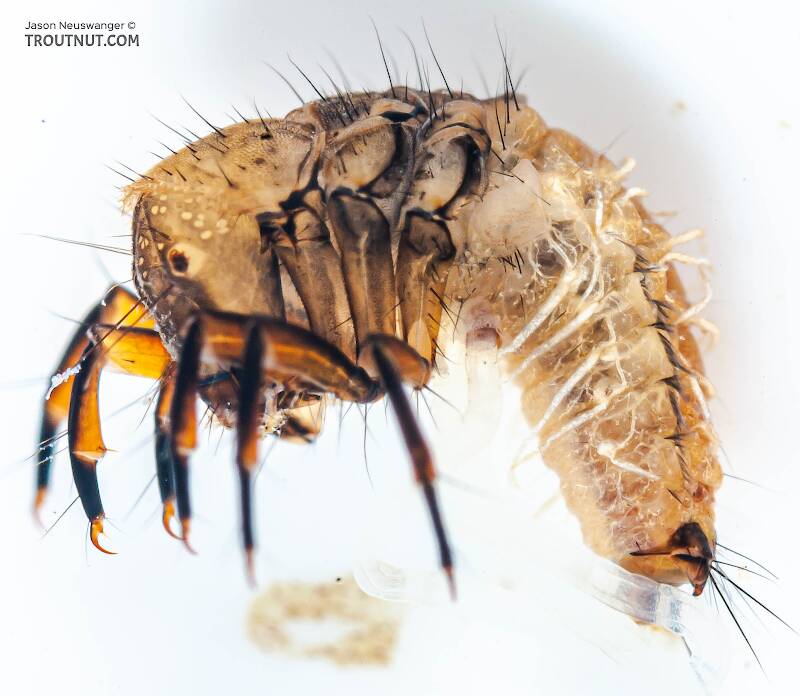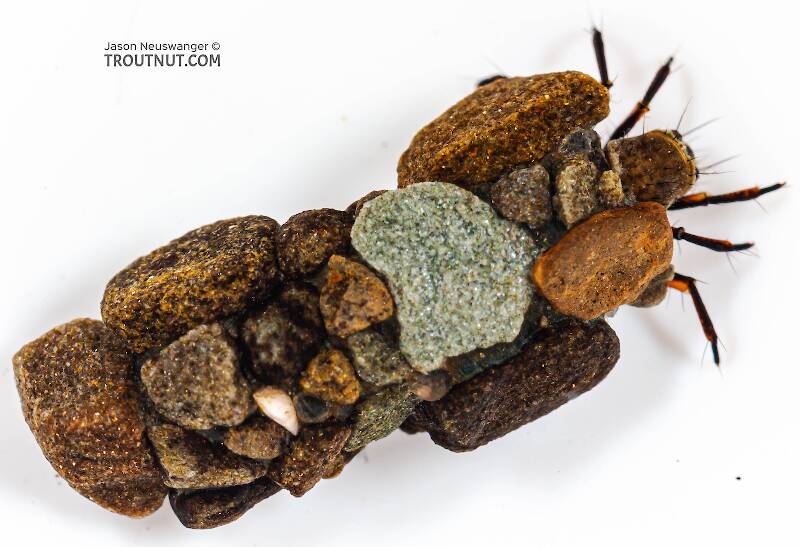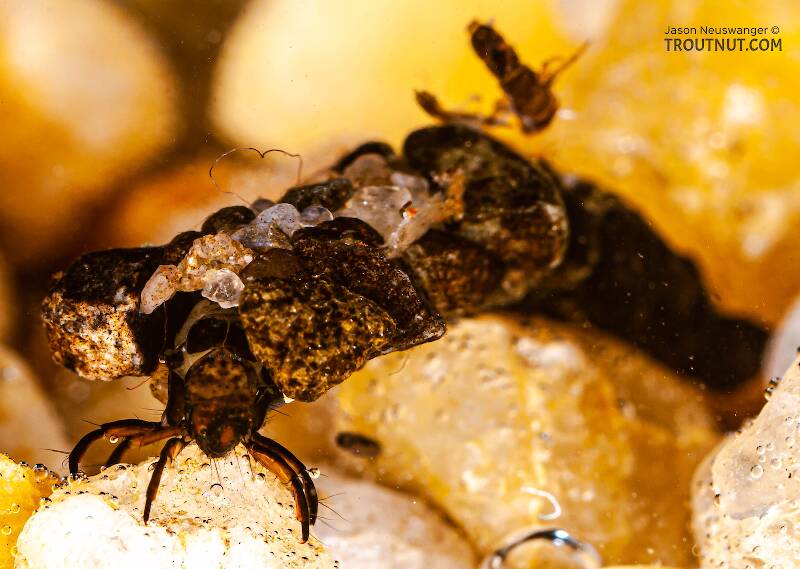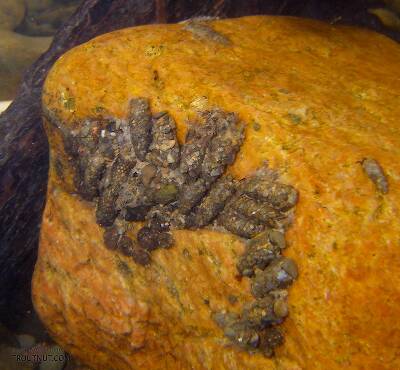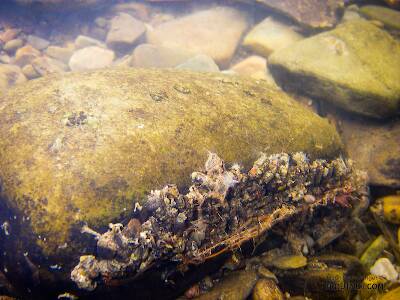
Salmonflies
Pteronarcys californica
The giant Salmonflies of the Western mountains are legendary for their proclivity to elicit consistent dry-fly action and ferocious strikes.
Featured on the forum

Troutnut is a project started in 2003 by salmonid ecologist Jason "Troutnut" Neuswanger to help anglers and
fly tyers unabashedly embrace the entomological side of the sport. Learn more about Troutnut or
support the project for an enhanced experience here.
Caddisfly Genus Neophylax (Autumn Mottled Sedges)
In his tables in Caddisflies, Gary LaFontaine ranks this as the fourth most important genus in the Pacific Northwest, where the main species are Neophylax rickeri and Neophylax splendens, but other species may be important across the country. Swisher and Richards in Selective Trout say that Neophylax fuscus is very important in the Midwest.
Where & when
Neophylax caddisflies emerge in concentrated numbers in the fall because they enter diapause during the summer, which synchronizes their emergence to within three weeks on a given stretch of stream.In 150 records from GBIF, adults of this genus have mostly been collected during October (43%), September (27%), June (8%), July (7%), August (7%), and November (5%).
In 123 records from GBIF, this genus has been collected at elevations ranging from 30 to 8566 ft, with an average (median) of 1601 ft.
Genus Range
Egg-Laying behavior
The ovipositing behavior of this genus is not well-documented, but what is known varies by species.Specimens of the Caddisfly Genus Neophylax
1 Female Adult
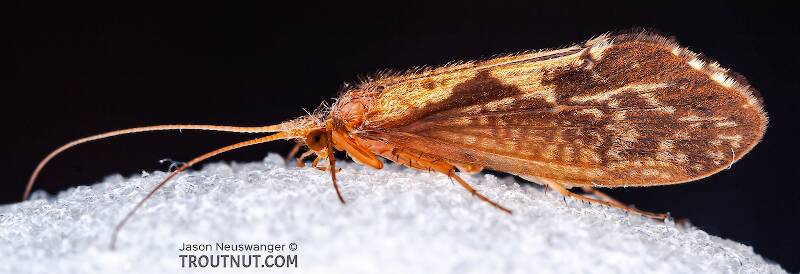
This large caddisfly looks really neat close-up.
3 Larvae
2 Underwater Pictures of Neophylax Caddisflies:
Start a Discussion of Neophylax
References
- LaFontaine, Gary. 1981. Caddisflies. The Lyons Press.
- Swisher, Doug and Carl Richards. 2000. Selective Trout. The Lyons Press.
Caddisfly Genus Neophylax (Autumn Mottled Sedges)
Taxonomy
Species in Neophylax
Neophylax concinnus
0
0
Neophylax fuscusSmall Dot-Wing Sedges
0
0
Neophylax rickeriBrown Dot Sedges
0
0
Neophylax splendens
0
0
21 species (Neophylax acutus, Neophylax aniqua, Neophylax atlanta, Neophylax auris, Neophylax ayanus, Neophylax consimilis, Neophylax delicatus, Neophylax etnieri, Neophylax mitchelli, Neophylax nacatus, Neophylax occidentis, Neophylax oligius, Neophylax ornatus, Neophylax ottawa, Neophylax securis, Neophylax sinuatus, Neophylax slossonae, Neophylax smithi, Neophylax stolus, Neophylax toshioi, and Neophylax wigginsi) aren't included.



